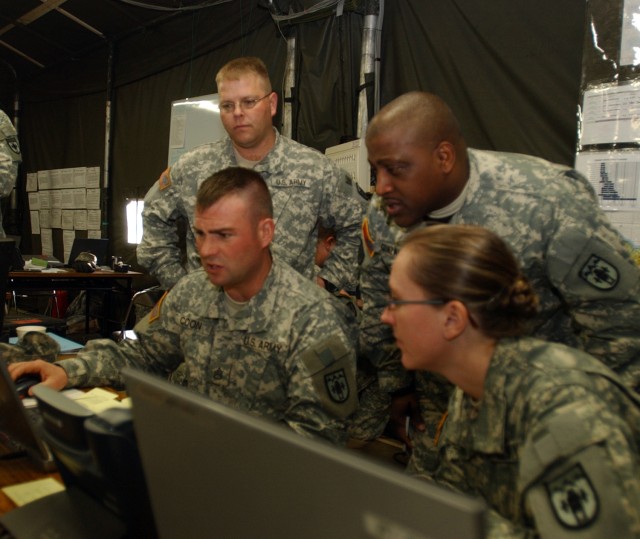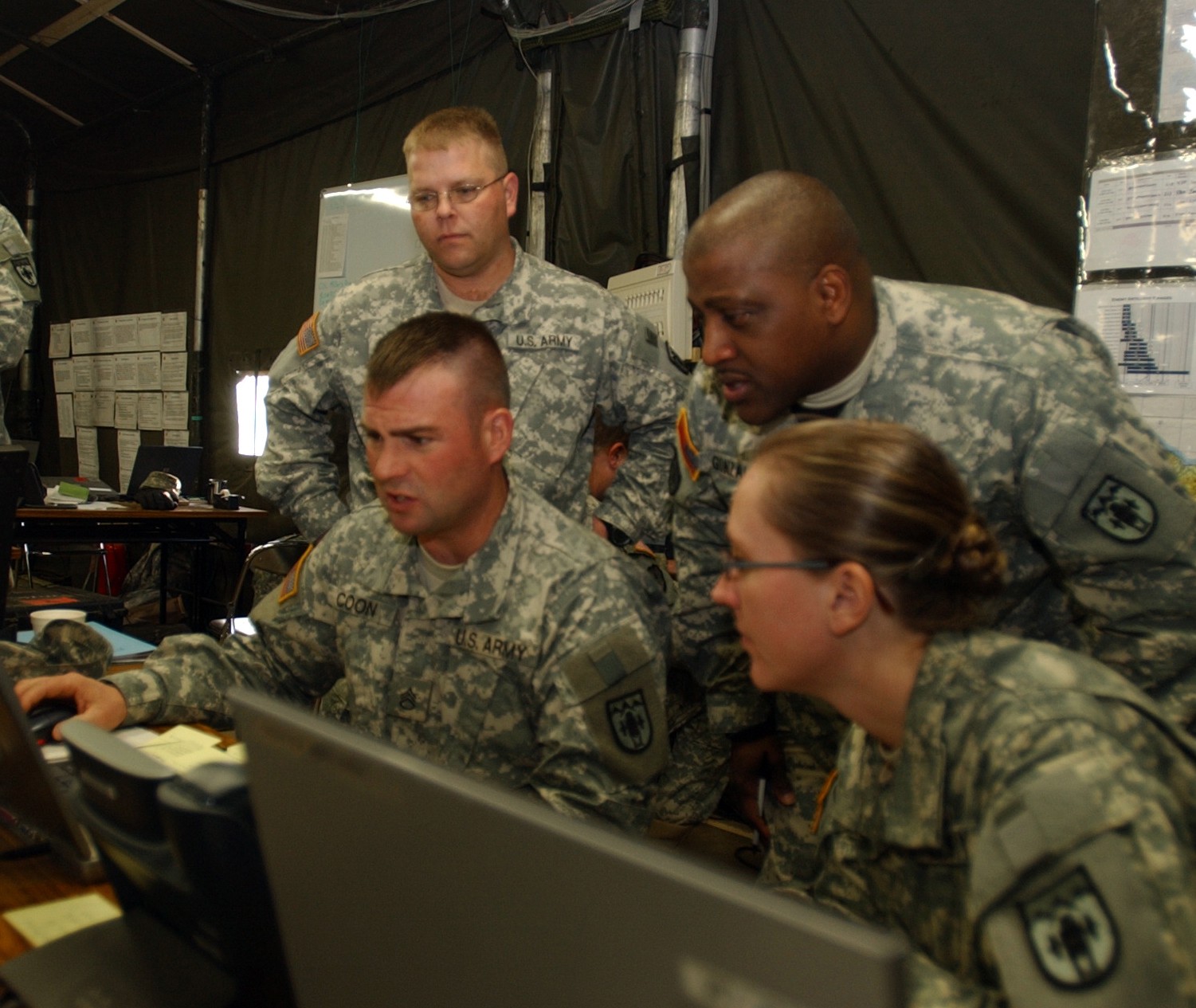CAMP CHITOSE, Hokkaido, Japan -- It's the kind of thing one might hear at an office - the voices of seasoned professionals analyzing information, and exchanging questions and assessments.
Except that these professionals are the Soldiers of the 169th Fires Brigade, and their business - run in an OD-green tent packed with tables, maps and computers - is destroying the enemy. The command staff of the Colorado Army National Guard unit is one of several taking part in Yama Sakura 57, the bilateral command post training exercise with members of the Japan Ground Self Defense Forces.
The brigade has been taking part in Yama Sakura for over a decade, and it helps them maintain their technical skills, use their battlefield operating systems, and work with the Japanese ground forces to better understand how they work, said Brigade Commander Col. Gregory Miller.
"It helps us to learn and work together to become more proficient," Miller said.
The exercise, which began on Dec. 8, involves a notional battle to defend Japanese sovereignty. The brigade's command staff and Soldiers of their subordinate unit, the 138th Field Artillery Battalion, are at Camp Chitose, located on the northern Japanese Island of Hokkaido. The Soldiers are part of Team One, a notional task force composed of American Army, Marine and Japan Ground Self-Defense Forces on Hokkaido.
"We're in command and control of all the field artillery assets supporting the exercise," said Miller. "We tell them where to move, where to shoot and when to shoot." Though the artillery is notional like the rest of the exercise, the command staff has to respond to scenarios generated by the war game.
In September, the command staff took part in Unified Endeavor, a similar exercise held in Germany, said Lt. Col. Scott Sherman, the brigade's executive officer. Unified Endeavor was a mission readiness exercise for the 1st Armored Division to prepare them to take over Multi-National Division Baghdad in January, he added.
"Exercises like this are our only opportunity to exercise our entire staff on our wartime mission," said Sherman.
In wartime - as in their deployment to Iraq in 2006-2007 - the 169th can field five battalions equipped with an array of indirect fire weaponry, including the Multiple Launch Rocket System (MLRS), High Mobility Artillery Rocket System (HIMARS) and 155mm howitzers, Sherman said. One of their MLRS Battalions can cover a square kilometer with bomblets, and that's just an example of the brigade's combat power, he explained.
Though Yama Sakura 57 involves a conventional war scenario, Japan's ban on mines means the brigade is using precision fires, as they did when they supported the 25th Infantry Division in Iraq, Sherman said.
"For this exercise, we're using satellite-guided missiles and rockets," he said. "We fired a lot of guided MLRS rockets in Iraq. It was part of the counter-insurgency fight, to cause very little collateral damage."
They'll be using their artillery assets to perform several missions, like supporting Team One's deep attacks, softening up its objectives with preparatory fires, supporting its passage of lines with suppressive fire and smoke, and suppressing the enemy's air-defense missile batteries, Sherman said.
The staff went after other enemy targets as well. Inside their command post, they could be seen sifting through map and computer data and talking urgently among themselves to locate and destroy the enemy's own long-range artillery.
"With a high-intensity conflict like this, the biggest challenge you face is the sheer speed of change," Sherman said. "You have to be very persistent on always keeping up to date on the changing conditions of the battlefield."
Commissioned as an artillery officer almost 20 years ago, Sherman said he likes the field because its mission changes frequently and is never static. The brigade fielded the MLRS in 2004 and will be fielding the more HIMARS in 2011, he added.
"It's very similar to MLRS," he said. "It's a much more versatile system." Describing it as a FMTV equipped to fire MLRS rockets or a guided missile, Sherman said the HIMARS is mobile and can be airlifted.
The brigade has been asked to take part in Yama Sakura 59 next year, Sherman said, where they'll be working with the Southern Japanese in a similar scenario. He's looking forward to it, he added.
"Our Soldiers can learn about the Japanese culture and how accommodating and appreciative the Japanese are of the United States' commitment to help protect their country."
This year's Yama Sakura exercise has the been the best one yet, said Miller.
"Every year it gets better," he said. "We learn to improve every year on the exercise."
=30=


Social Sharing